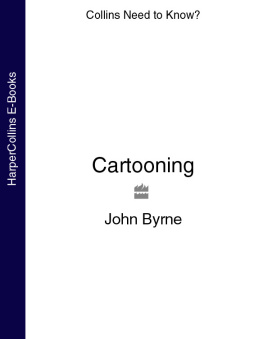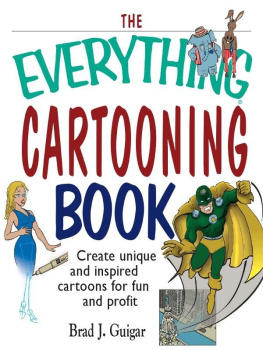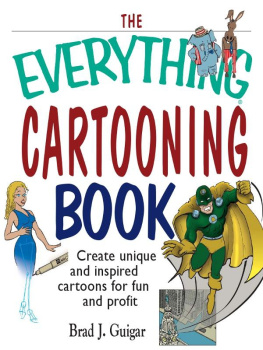
Character Design
Cartooning is about communicating ideas and stories using pictures instead of words, and its the cartoonists job to keep the audience interested by creating compelling and memorable characters. In this book, youll learn how to design characters from start to finish through the use of shapes, lines, expressions, postures, props, and costumes. Youll discover how to create drawings that will tell a reader all he or she needs to know about a characterfrom personality and emotional state to age and occupationwithout the use of words. And whether you draw cartoons as a hobby or as a career (or both!), the lessons in this book will give you a solid foundation in developing unique characters. So pick up a pencil or pen and lets get started! Sherm Cohen

CONTENTS
GETTING STARTED
You dont need much to start designing cartoon charactersjust a few pencils, a pad of paper, a couple of erasers, and a pen or marker will do. Chances are you have all you really need right now, but there are a few additional items that can help you make the most out of your cartooning experience. Check out some of the items that I find helpful here; then experiment to see what works for you!

PAPER TRAILS There are many types of paper available, from newsprint to Bristol and illustration boards, all of which come with different textures. A smooth surface will give you tight, clean lines; whereas a rough surface will result in a textured effect. For basic drawing and sketching, pick up a package of plain white paper from any office supply store.

SHARPENING YOUR SKILLS A handheld pencil sharpener is great when youre on the go, as long as you can find a good place to dispose of the shavings! If you have a more stationary work area, invest in an electric sharpenerit can give your pencil the perfect point quickly and easily.

MAKE YOUR MARK Its good to have a range of pencils on hand so you can create varying strokes. Drawing pencils are labeled with numbers and letters to indicate the hardness or softness of the lead (actually graphite): B pencils are soft, H pencils are hard, and HB pencils are right in the middle. The higher the number that accompanies the letter, the more intense the softness or hardness of the lead. For example, a 4B is softer than a 3B. I prefer a B pencil for fine detail work and a 3B for softer lines.
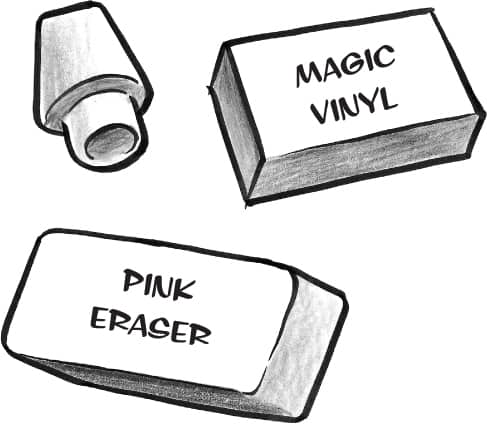
GETTING OUT THE LEAD Its a good idea to have an array of erasers on hand. Theres the pencil-top eraser, which is great for fixing small mistakes (but leaves a lot of annoying crumbs); the pink rubber and vinyl erasers, which are useful for erasing large areas; and the kneaded eraser, which can be twisted and reshaped to get into small areas (and doesnt leave any crumbs at all!).
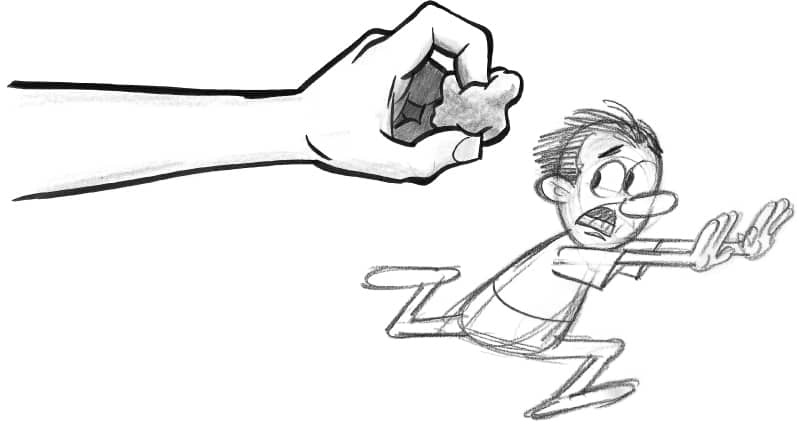

TOUCHING UP You may want to try out a few different types of drawing tools for a cleaned-up, professional look; for example, there are colored pencils, markers, brush pens, and watercolor brushes. Brush pens give you the gorgeous line of a brush without having to keep dipping them in ink! And water-color brushes will also produce a sleek look; the most common brush sizes range from #0 (very fine tip) to #4 (very fat tip), but most ink slingers use a #2 brush. (Make sure to keep the brush clean, and never dip the metal part into the ink.)

TRACING YOUR STEPS Tracing paper is great for experimenting with a character to get it just right. Sketch a character on tracing paper; then slip it under another sheet of tracing paper and make some adjustments.
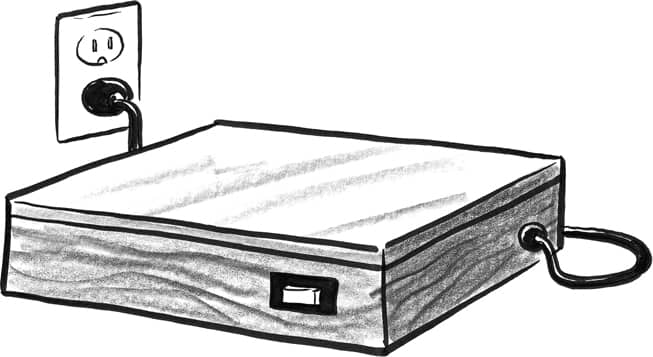
SEEING THE LIGHT A professional light box can help you produce clean lines. Sketch your character on a piece of tracing paper, and then tape the finished drawing to the surface of the light box with artists tape. Then place a piece of heavier paper over the sketch, turn on the light, and trace the drawing with ink. Ta-da!
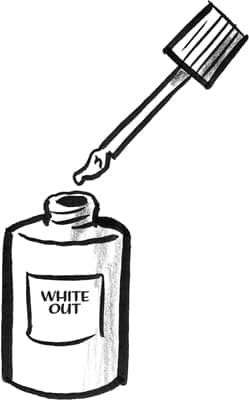
COVERING UP If you make a mistake, try some correction fluid; its often so discreet that no one will be able to tell where youve made a blooper.
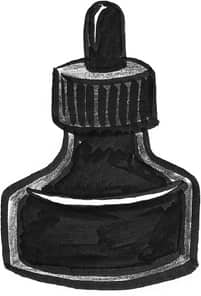
INKING IT For dramatic outlines, dip the tip of a watercolor brush into India ink. Just be careful not to drip any on your drawings!
COPYCAT
A good way to improve your drawing skills is to copy other cartoons that catch your eye in books, magazines, newspapers, or comic books. Use these images as a reference and practice drawing them (without tracing!). Theres nothing wrong with copying for practicejust about everybody learns that way! The best thing to do when copying another image is to try changing the image to make it your own: Alter the pose or the expression, or exaggerate the facial features.
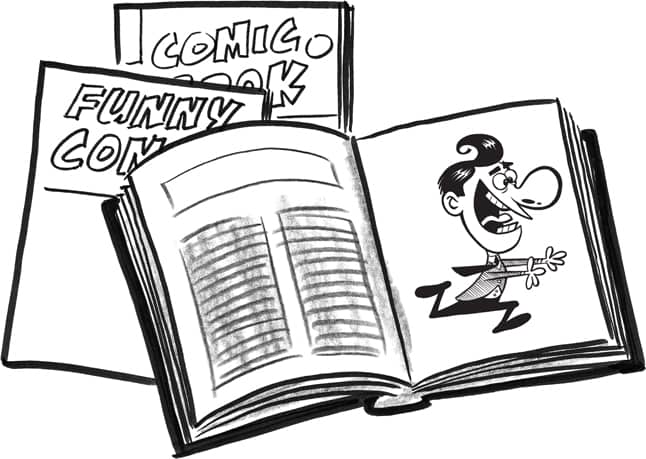
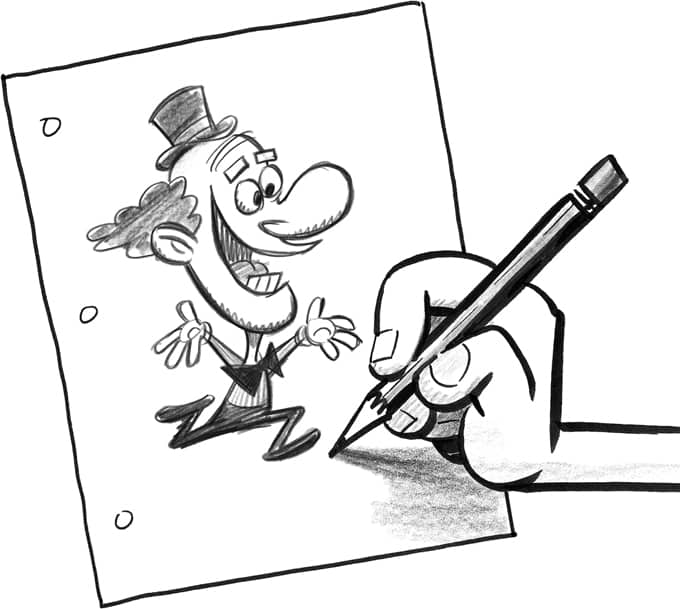
SHAPE UP
Anyone can learn to design cartoon characters by simply remembering the three most basic shapes: the circle, the square, and the triangle. All subjects can be broken down into variations of these three shapesand once you give form, or dimension, to those shapes, youll have objects that seem to bounce right off the page. Try combining different shapes to see what new forms you can create!

TAKING SHAPE The triangle, the circle, and the square are the basic building blocks of all cartoon drawings. Combine variations of these three shapes to design and give life to your creations!
Next page

